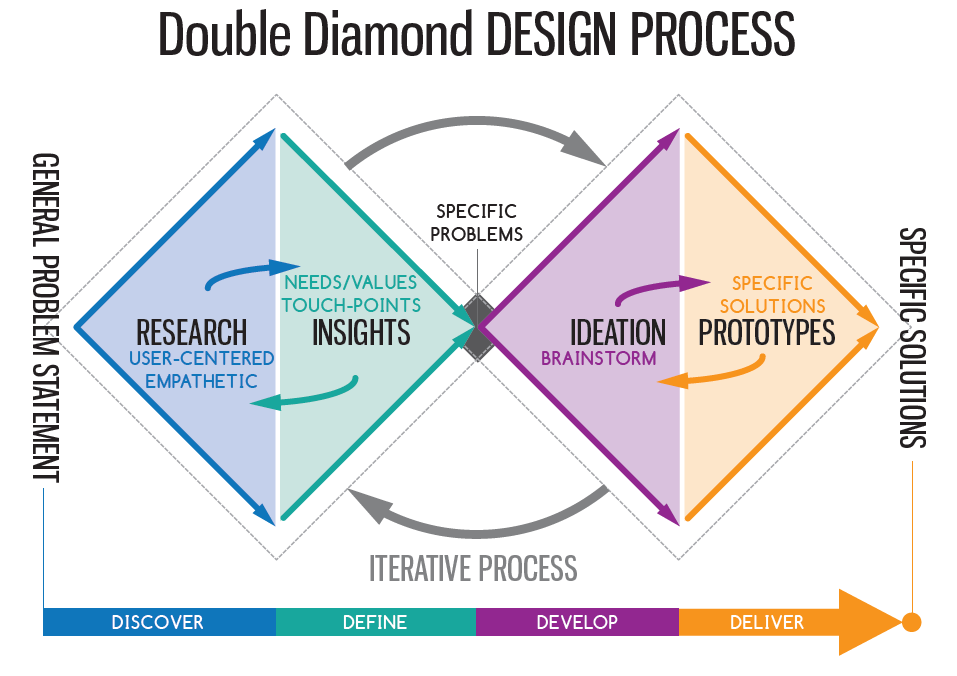Creatively Learning
This project was conceived by Western Australian educators from several schools across the state in conjunction with the Learning Futures Network.
The project aims to contribute to the immediate and future needs of Western Australia through the considered application of STEM learning principles to challenges that face all Western Australians.
Learn more about the team behind STEM4Innovation.

“Design Thinking is a mindset, not a toolkit or a series of steps.“
ARNE VAN OOSTEROM
 The whole process begins with identifying an area where problems exist. Then…
The whole process begins with identifying an area where problems exist. Then…
DISCOVERY
Once you’ve got a general idea of a problem area you need to begin to understand this from many perspectives, but especially form the point of view of those most affected – this is empathy and it is revisited constantly throughout the process. The Discovery phase incorporates a lot of research.
DEFINITION
This is where you work towards a very specific statement of a problem that can be solved. Based on your empathetic understanding and deep research you are able to get to the heart of the challenge and propose a problem is addressing the real needs and values of those affected. A well-defined problem is essential in generating a meaningful solution.
DEVELOPMENT
This is the FUN part – ideation – this is where schools engage ALL their assets and resources including parents groups, industry partnerships and tertiary support to develop a huge series of potential solutions. Through the 21st C learning pedagogy (communication, collaboration, critical thinking & creativity) we narrow down solutions ready for prototyping. We would also expect our school teams to be in regular contact with the community element in need in order to assist in a more streamlined process rather than waiting for the prototyping phase.
DELIVERY
This is all about a clear expression of the proposed solution along with plans, prototypes, strategies and actions – all informed by a rich connection to the original needs and all the associated dependencies. It’s the part where SMART plans are developed – Specific, Managable/Measurable, Attainable/Achievable, Realistic, Time-framed

Additional Reading suggestions:
- Future Jobs, Future Skills
On 28 May 2019 the Western Australian Government launched the State STEM skills strategy, Future jobs, future skills – Driving STEM skills in Western Australia.
The strategy aims to build a globally competitive and innovative workforce with the skills to drive Western Australia’s technological future and create new job opportunities. - Designing a Future Economy: Developing design skills for productivity and innovation.
This unprecedented study combines UK and US data to investigate for the first time the relationship between design skills and economic outcomes, focusing explicitly on productivity and innovation. It looks at the relationship between occupations and skills, and finds that where design skills are used, they contribute significantly to the wealth of the nation, greater productivity and more innovation. But it also provides a stark warning about the potential impact of underinvesting in these skills, and the need to better prepare for the economic, technological and political changes ahead. - STEM Career Profiles (Royal Institution of Australia)
Use our career profiles to help inspire students about the importance of STEM and inform them about the wide range of careers that they could aspire to. Most profiles have relevant downloadable teacher resources mapped to the Australian National Curriculum to support STEM teaching in class. - Take 2 STEM – (WA State Government)
No matter what you want to do in the future, you will need STEM skills. STEM skills – like problem solving, critical thinking, and working in a team, are critical for jobs of the future. They can help you to design and use new technologies, solve important problems, help people, make a difference to society and protect our environment. The Take 2 STEM campaign is about educating the community on the importance of STEM skills to ensure that all Western Australians are well-placed to take up new and emerging jobs. Follow the links above for some great STEM stories and for some useful links that will give you all the information you need to get started in STEM.
